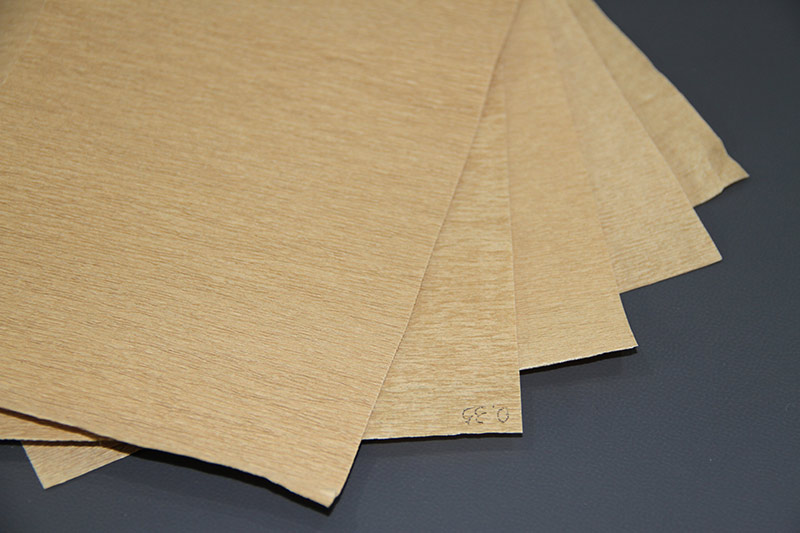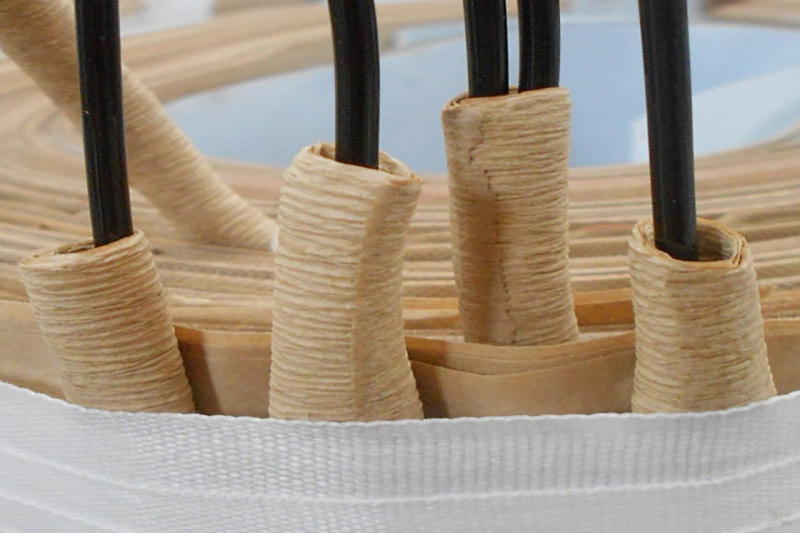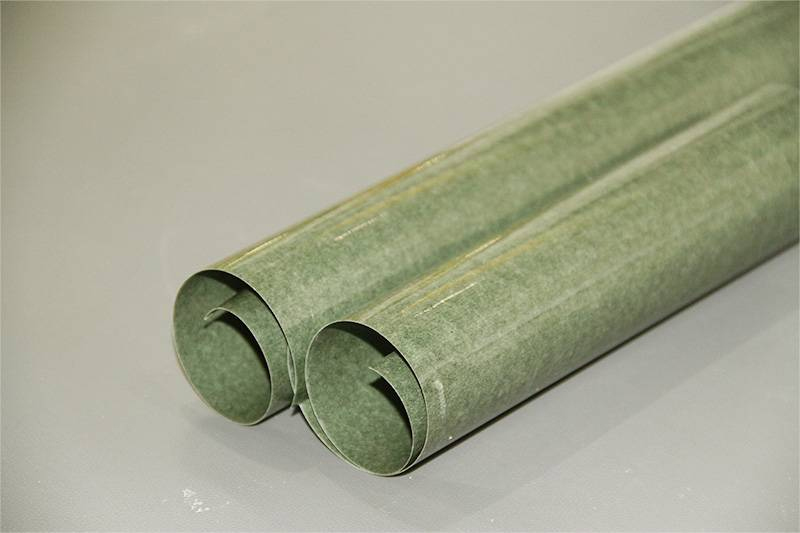Electrical insulation paper plays a vital role in maintaining the safety and efficiency of electrical systems. Among the various types available, insulating crepe paper stands out as a versatile and widely used option. In this comprehensive guide, we will delve into the world of electrical insulation paper, with a particular focus on insulating crepe paper. From its characteristics and applications to its lifespan and proper storage methods, this guide will provide valuable insights for engineers, technicians, and enthusiasts alike. Get ready to explore the fascinating world of electrical insulation paper and discover the multitude of options available to meet your specific needs.
Insulating crepe paper, also known as insulating crinkled paper, is a specialized type of paper that possesses unique electrical insulation properties. It is manufactured by subjecting electrical-grade kraft paper to a crinkling process, resulting in a distinctive wrinkled texture. This creping process significantly enhances the mechanical strength and flexibility of the paper, making it ideal for various electrical applications.

Insulating crepe paper possesses several unique characteristics that make it a preferred choice for electrical insulation. Firstly, its crinkled texture provides enhanced flexibility, enabling easy wrapping and conforming to irregular shapes. Additionally, the creping process imparts improved mechanical strength, making it resistant to tearing and puncturing. Insulating crepe paper also exhibits excellent dielectric strength, ensuring a high level of electrical insulation. Furthermore, it offers good thermal resistance, enabling it to withstand elevated temperatures without compromising its performance.
Insulating crepe paper finds wide application in various electrical systems. Here are five scenarios where its use is particularly advantageous:

Insulating crepe paper is commonly used in transformers for layer insulation, covering the winding conductors. Its flexibility and mechanical strength make it an ideal choice for this critical application.
Motors generate heat during operation, and effective insulation is crucial. Insulating crepe paper is used as slot liners and phase insulation in motors, providing both electrical and thermal protection.
Capacitors require reliable insulation to prevent electrical leakage. Insulating crepe paper is utilized for wrapping and insulating capacitor windings due to its excellent dielectric properties.
Electrical cables need insulation to prevent current leakage and ensure safe operation. Insulating crepe paper is often used as a layer of insulation within cable constructions, providing efficient electrical insulation.
In high-voltage systems, insulation is paramount to ensure safety. Insulating crepe paper is widely employed in high-voltage applications, such as power transmission lines and switchgear, due to its high dielectric strength and thermal resistance.
In conclusion, electrical insulation paper comes in various types, each with its own unique characteristics and applications.
Crepe paper is also a type of electrical insulation paper. In addition to crepe paper, there are various other types of electrical insulation paper, each with its unique properties and applications. Let’s explore some of these types to help you better understand your specific needs:
Fish paper, also known as vulcanized fiber, is a widely used type of electrical insulation paper. It is made from cellulose fibers that are chemically treated and bonded together under high pressure and temperature. Due to its flexibility and resistance to tear and puncture, fish paper is often used as slot liners and interphase insulation in motors and transformers.

Nomex Paper is a high-performance electrical insulation material known for its excellent thermal stability and flame retardancy. It is made from aramid fibers and possesses outstanding mechanical strength and durability. Our NHN paper is made by laminating two layers of Nomex paper with a PET film in between, offering high mechanical performance. Similarly, our NMN paper also utilizes this lamination technique, with Nomex paper on the outside and a layer of PI film in the middle. Both of these products are primarily used for dry-type transformers.
Aramid paper, similar to Nomex paper, is made from aramid fibers. It offers excellent mechanical strength, tear resistance, and high dielectric strength. Aramid paper is commonly used in transformer insulation, where it provides reliable electrical insulation and mechanical support. Its exceptional tensile strength and resistance to aging make it a preferred choice in various electrical applications.
Diamond Dotted Paper is made of kraft paper and is a type of electric insulating paper made from wood pulp. It is known for its high tensile strength, excellent dielectric properties, and cost-effectiveness. It is commonly used as insulation for coil windings in transformers, capacitors, and other electrical equipment. Its flexibility and ease of use make it a popular choice in many electrical applications.
Polyester film, also known as Mylar, is a non-conductive material that offers excellent electrical insulation properties. It has high dielectric strength, good temperature resistance, and dimensional stability. Polyester film is commonly used as a layer of insulation in capacitors, cables, and other electrical components where space constraints and high insulation requirements are crucial.
After understanding so many electrical insulation papers, you should be able to determine which products you need. If you are still unsure, you can consult us and we will have professionals to answer your questions. Next, let’s learn about some common questions.
The lifespan of insulating crepe paper depends on various factors, including the operating conditions, level of stress, and maintenance practices. Generally, when used within recommended temperature and voltage ranges, insulating crepe paper can last for several decades. Regular inspections and periodic maintenance are essential to identify any signs of degradation or damage and take necessary corrective actions.
Proper storage is crucial to maintaining the quality and performance of insulating crepe paper. Here are some guidelines to follow:
1.Store in a dry environment: Moisture can degrade the insulation properties of crepe paper. Therefore, it should be stored in a dry environment, away from direct sunlight and excessive humidity.
2.Avoid extreme temperatures: Extreme temperatures can impact the integrity of the paper. Store it in a temperature-controlled area, avoiding exposure to extreme heat or cold.
3.Protect from physical damage: Ensure that the crepe paper is not subjected to any physical damage during storage. Avoid placing heavy objects on top of the rolls and protect them from sharp edges or rough surfaces.
4.Use appropriate packaging: Store the crepe paper in its original packaging or wrap it in polyethylene sheets to prevent dust accumulation and potential damage.
Electrical insulation paper, including the versatile insulating crepe paper, plays a crucial role in maintaining the safety and efficiency of electrical systems. By understanding the various types available, their unique characteristics, and proper storage methods, professionals and enthusiasts can make informed decisions when selecting and utilizing electrical insulation paper.With this ultimate guide in hand, you are now equipped with the knowledge to navigate the world of electrical insulation paper and make informed choices for your electrical projects.
If you need our products please write down any questions, we will reply as soon as possible.
There are three ISO certificates for quality certification. The certificates will be shown later. ISO
After receiving the advance payment, the production cycle is 15-25 days. And the transportation cycle should be calcul……
We supply with installation guide and user manual for each transformer. If you do not understand them. We will offer v……